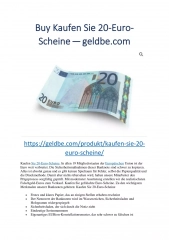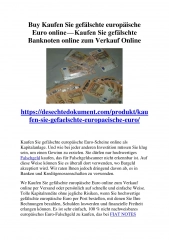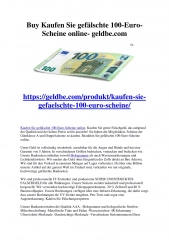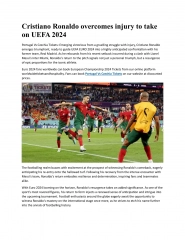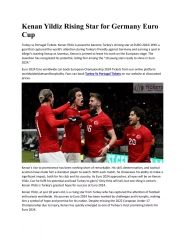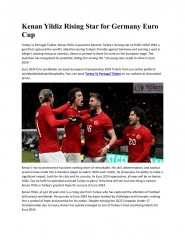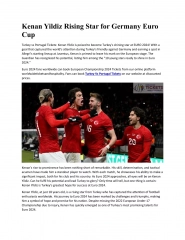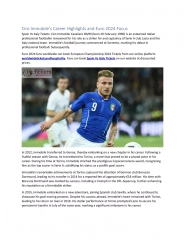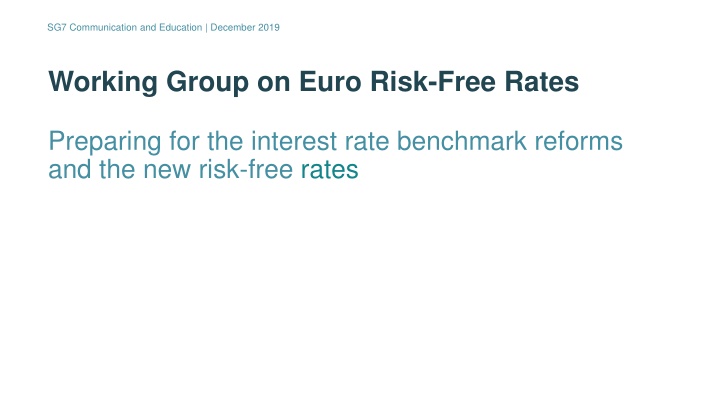
The Transition to Risk-Free Rates in Finance
Discover the shift from IBORs to risk-free rates in financial markets due to benchmark reforms. Learn about the role of the Euro RFR Working Group, the transition from EONIA to the STR, and the importance of fallbacks for Euribor. Stay informed to ensure a smooth adoption of these changes.
Download Presentation

Please find below an Image/Link to download the presentation.
The content on the website is provided AS IS for your information and personal use only. It may not be sold, licensed, or shared on other websites without obtaining consent from the author. If you encounter any issues during the download, it is possible that the publisher has removed the file from their server.
You are allowed to download the files provided on this website for personal or commercial use, subject to the condition that they are used lawfully. All files are the property of their respective owners.
The content on the website is provided AS IS for your information and personal use only. It may not be sold, licensed, or shared on other websites without obtaining consent from the author.
E N D
Presentation Transcript
SG7 Communication and Education | December 2019 Working Group on Euro Risk-Free Rates Preparing for the interest rate benchmark reforms and the new risk-free rates
Table of contents 1. Purpose and use of this pack 2. What is happening with regard to IBORs and risk-free rates 3. The role of the Euro RFR Working Group 4. Transition from EONIA to the STR 5. Introducing fallbacks for Euribor 6. What market participants need to do 7. Timeline 2
Purpose and use of this pack Create awareness and call for action to ensure a seamless transition The purpose of this pack is to inform readers about the transition due to interest rate benchmark reforms, the use of risk-free rates, and the roles & responsibilities and recommendations of the Working Group on Euro Risk-free Rates To facilitate a smooth adoption with minimal market disruption by raising awareness among market participants of the upcoming change. Purpose This pack has been prepared by the Working Group on Euro Risk-free Rates to be used by its authorized members when engaging with internal and external stakeholder on this topic. Uses It covers the following areas What is happening with regard to IBORs and the new risk free rates The role of the Working Group on euro risk-free rates Transition from EONIA to the STR Introducing fallbacks for Euribor What do market participants need to do? International developments and timeline Scope of this pack 3
What is happening with regard to IBORs and risk-free rate use Key messages In 2014, the Financial Stability Board (FSB) published its report Reforming major interest rate benchmarks , which sets out a series of recommendations to strengthen existing benchmarks by underpinning them, to the greatest extent possible, with real transaction data and to develop alternative, nearly risk-free reference rates. IBORs (Interbank offered rates) play a central role in financial markets; they act as reference rates for a broad range of financial instruments and are therefore key to financial stability. Declining activity in the underlying markets and challenges to the sustainability of the panels contributing to these rates pose potentially serious risks to individual users of the rates and to the financial system more broadly. The alternative nearly risk-free rates (RFRs) selected as replacements or fallbacks to IBOR in various jurisdictions will be based on robust, liquid underlying markets. Global regulators and the public/private sector have established RFRs working groups to identify RFRs and plan their use, as appropriate 4
What is happening with regard to IBORs and risk-free rates Why markets need alternative risk-free rates FSB recommendations on reforming major interest rate benchmarks: Strengthen existing benchmarks by underpinning them with transaction data to the greatest extent possible Need for change: IBOR reform driven by the following factors: A lack of robustness, due to shrinking underlying markets coupled with the large volume of financial transactions that reference these rates has resulted in systemic risk concerns and manipulation risks. Develop alternative nearly risk-free rates as many transactions are better suited to reference rates that are closer to risk-free Reluctance by EONIA, LIBOR and EURIBOR panel banks to submit quotes. Regulatory background: The International Organization of Securities Commissions (IOSCO) principles on financial benchmarks (2013) BMR sets additional requirements for: Contributors Users Administrators EU Benchmarks Regulation (BMR, effective 01/01/2018) The BMR will be phased in fully as of 01/01/2022 for critical benchmarks and third-country benchmarks, and as of 01/01/2020 for all other benchmarks Effective governance and control framework to ensure the integrity and reliability of the benchmark (methodology) Apply for and obtain registration or authorization from NCA Effective governance and control framework to ensure the integrity and reliability of all contributions of input data to the administrator Robust plans if benchmark ceases to exist, including fallbacks in contracts Art 28.2 BMR Only registered or authorized benchmarks can be used The continuity of the Libor will not be guaranteed after 2021; hence, it needs to be replaced by alternative nearly risk-free rates (RFRs) 5
The role of the working group on euro risk-free rates European Central Bank (ECB), the Financial Services and Markets Authority (FSMA), the European Securities and Markets Authority (ESMA) and the European Commission set up a private sector working group with the task to identify and recommend alternative euro risk-free rates. General Mandate Organisational Structure See Terms of Reference To identify and recommend alternative euro risk-free rates. Such rates serve as a basis for an alternative to current benchmarks used in a variety of financial instruments and contracts in the euro area. Subgroups in Phase 1 only To work on a market adoption plan to ensure a smooth transition to these alternative euro risk-free rates by all market participants Working Group Working group (chaired by the private sector: ING Chief Risk Officer): Voting members: 21 credit institutions Observers: ECB, ESMA, FSMA, EC Secretariat: ECB Non-voting members: EMMI, market associations, EIB, 1 insurance company ECB secretariat Subgroup #1 Identify Alternative RFRs Subgroup #2 Identify term structure on RFR(s) Subgroup #3 Contractual robustness: legacy and new contracts For voting and decision-making, each member firm will have one vote. Observers will not be eligible to vote. Decisions and recommendations of the working group should be reached by consensus, if possible, or otherwise by a two-thirds majority where necessary. Subgroup #4 EONIA transition Subgroup #5 Cash products & derivatives Subgroup #6 Financial accounting & risk management Subgroup #7 Communication & Education Decisions or recommendations by the working group are not binding for the private sector. It is up to financial market participants to prepare themselves for changes in benchmark rates, and the working groups recommendations are meant to help financial market participants in the transition. 6
The role of the working group on euro risk-free rates Context and deliverables Adoption/Transition key topics There is a high level of involvement from public authorities and, as a consequence of the BMR and the EONIA and EURIBOR reforms, the base case scenario for the working group is to provide recommendations for: A transition from EONIA to the euro risk-free rate ( STR); and Fallbacks for the euro risk-free rate and EURIBOR. Steps of the implementation of new benchmarks are: Legal implications Subgroup (SG) 3 Cash products & derivatives implications SG 5 Financial accounting & risk management implications SG6 Communication & education SG7 Approach: A careful market adoption plan could minimise disruption to markets and consumers and safeguard the continuity of contracts to the greatest extent possible, including contracts that currently reference a term rate rather than an overnight rate. Public authorities involvement: This base case scenario forms the basis for the key deliverables of the working group: Identify and recommend (alternative) euro risk-free rates Identify and make recommendations for term structures based on risk-free rate(s); There is a high level of involvement by public authorities and a concerted effort by all market participants to facilitate a gradual reduction in the current reliance on interbank offered rates. Identify and make recommendations on legal implications for legacy and new contracts; and Promote market adoption of the recommendations to ensure a smooth transition. 7
The role of the working group on euro risk-free rates Main milestones of the working group since February 2018 Since 2H 2018 EONIA - STR (Euro Short-Term Rate) The choice of the STR as the euro risk-free rate: The STR will replace EONIA (in view of its non-compliance with the EU Benchmarks Regulation) and serve as a basis for Euribor fallbacks; The choice of a transition path from EONIA to the STR, so that the EONIA administrator, EMMI, can recalibrate EONIA s methodology to become STR plus a fixed spread (8.5 bps) until its discontinuation on 3 January 2022; Publication of recommendations on the changes to legacy and new contracts referencing EONIA (EONIA legal action plan); Recommendations and guidance regarding the practical implementation of the switch from EONIA to the STR for cash and derivative products (IT impact, settlement issues, change in discounting regime, possible compensation mechanism ) Future guidance on the accounting impact of the transition to the STR. EURIBOR The Euribor administrator (EMMI) was granted authorisation under the EU Benchmarks Regulation; Euribor usage allowed beyond the end of the transitional period of the EU Benchmarks Regulation (currently 1 January 2020, soon to be changed to 1 January 2022). The working group is working on the necessary fallbacks for Euribor, consistent with the BMR requirements. So far, the working group has worked on forward-looking fallbacks based on the future STR derivative market (see methodology recommended under this link) ; it has recommended a methodology based on future OIS committed quotes and recently called for administrators interested in the production of these rates to engage with the working group. Backward looking methodologies , by compounding the realised STR, are also to be explored as Euribor fallbacks. The use cases for these fallbacks will be analysed in the months to come.
Transition from EONIA to STR What is the STR? What was the problem with EONIA? What is the EONIA - STR transition? EONIA in its previous form was going to become with the BMR, given the lack of underlying transactions and high concentration of volumes among a small number of contributors. Therefore, EONIA usage had to be restricted administrator, EMMI, announced that it would stop publishing it on 3 January 2022. In order to maintain EONIA for a transitional period and until its discontinuation in 2022, its methodology has been changed. The STR reflects the wholesale euro unsecured overnight borrowing costs of euro area banks. incompliant The rate is published (first date of publication: 2 October 2019 at 8:00 CET) for each TARGET2 business day based on transactions conducted and settled on the previous day (reporting date T) with a maturity date of T+1. Since 2 October 2019, the current EONIA methodology has been modified to become STR plus a fixed spread of 8.5 basis points. This spread is based on a simple average of the EONIA - pre- STR spread between 17 April, 2018 and 16 April, 2019, with a 15% trimming mechanism. The STR is based exclusively on borrowing transactions in euro conducted with financial counterparties that banks report to the ECB in accordance with the MMSR Regulation. The STR is calculated using overnight unsecured fixed-rate deposit transactions over 1 million. and its The recalibration of the EONIA methodology has taken place on the first day of the daily publication of the STR, on 2 October 2019. The publication of EONIA moved from the current timing every evening at T (by 7pm) to T+1 (9.15 am), to be aligned with STR publication (T+1 at 8am). As a result, after a public The ECB is publishing STR data at the end of every maintenance period at this link: consultation, the working group on euro risk-free recommended the STR as its replacement. rates https://www.ecb.europa.eu/paym/initiatives/interest_rate_be nchmarks/euro_short-term_rate/html/index.en.html NB: This methodology was suggested by the working group on euro risk-free rates to EMMI after a public consultation. 9
Transition from EONIA to the STR Derivatives and cash products impact What do market participants need to do? Prepare relevant teams for enhanced oversight during the cutover period to ensure that the change in the rate publication time does not trigger process failures Screen their inventory of affected transactions and system environments in order to assess the need to implement the changes required to cope with the delay in publication of EONIA from T at 19:00 CET (until 30 September 2019) to T+1 at 9:15 CET (as of 2 October 2019) The shift of the publication time of EONIA from T at 19:00 CET to T+1 9:15 CET is not expected to affect the availability of the EONIA rates via distribution channels Unique identifiers of the EONIA Index on platforms should not change after the change in publication time Publication time The shift of the publication date and time from T to T+1 does not lead to a time series gap 10
Transition from EONIA to the STR - Impact on derivatives and cash products Impact on derivatives and cash products 1 2 Secured Cash Products Derivatives Interbank market participants will stop using floating rate Repo/Reverse Repos. EONIA is being used as Floating Rate reference ( Floating Rate Option ); accordingly, the WG recommends an active transition approach until the end of 2021 (when EONIA will be discontinued). EONIA is used as the collateral remuneration rate for derivatives portfolios. This influences the valuation of all CSA relevant derivatives, the calculation of derivative exposure and the settlement of margin requirements. We recommend single-counterparty clean discounting using STR flat as soon as possible. We encourage CCP s to co-ordinate a big-bang approach and the market to migrate their remaining (non-cleared) derivatives portfolios in a phased approach (mainly for operational reasons). For non-interbank transactions, we follow the ICMA ERCC recommendation to use the same-day rate to calculate and settle interest payments without delay. The working group considers that rebalancing the economic value changes using cash compensation may have advantages in terms of operational simplicity compared to other methods. We also discuss specific implications for physically settled and collateralised cash price swaptions and explain why caution is required as the option is affected by the discounting change, triggering re- evaluation and compensation. Disadvantaged parties can claim the difference (thresholds may apply). 11
Transition from EONIA to the STR - Impact on derivatives and cash products Impact on derivatives and cash products 4 3 Unsecured Cash Products Securities referencing EONIA These refer to NEUCP, NEUMTN, CD and rarely ECP. The settlement process will be impacted by the publication shift from T to T+1 but it is not perceived as a cause of concern by front/back offices, issuing and payment agents (IPA) or depositaries as the procedure is already being run with the T-1 value. Given that current accounts and savings accounts are mass products and clients knowledge of the EONIA- STR transition differs widely from country to country, a systematic outreach strategy is essential. Institutions will need to provide timely and precise information to all clients whose contracts are linked to products affected by the STR transition. However, market participants should adapt their valuation, pricing and accounting systems accordingly, taking into account the shorter time lag available to perform all necessary evaluations. Some potential issues may arise in the secondary market depending when the accrued interest needs to be calculated, i.e. whether the related transaction occurs before 9:15 CET (before the front office systems are updated with the new rate, i.e. still based on T-2) or after 9:15 CET (based on the just-published T-1 value). It was concluded that the settlement of deals mainly relies on bilateral agreements (agreed payment instructions, reference rate value to be used) and, for that reason, the transition should be manageable. However, a specific analysis of market conventions may be required in the future to provide market participants with guidance on how the conventions used for EONIA referencing securities may evolve due to the transition from EONIA to the STR and the development of a new market. For swingline loans, when referencing the STR directly in new contracts, market participants should consider whether any compensation mechanism is required. 12 NEUCP (Negotiable European Commercial Paper); NEUMTN (Negotiable European Medium-Term Note); CD (Certificate of deposit); ECP(Euro Commercial Paper
Transition from EONIA to the STR - Models Models STR readiness Regarding the transition to the new rate, market participants are strongly encouraged to introduce all necessary modifications in order to be able to issue, buy, trade and manage new contracts indexed to the STR and avoid issuing new contracts indexed to EONIA with maturities going beyond the transition period. Models (funds transfer pricing models, discounted cash flow models) are not expected to be impacted now that the STR has begun to be published but their input parameters will vary with the performance of the yield curves. So, we expect to see a gradual transition between 2020-2021. For funds using EONIA as a benchmark or a hurdle rate (e.g. money market funds, liquid strategies and total return/absolute strategies funds), the transition from EONIA to the STR will require amendments to the calculation formulas, operational procedures and adjustments to the corresponding systems of the fund administrators. Until the STR swap curve becomes directly observable, the fixed spread relation between EONIA and STR fixings can be applied to derive a full-term structure for the STR from EONIA linked overnight index swaps. Market participants should be aware that the changes in the models may impact not only derivatives but also other assets and liabilities (e.g. loans, bonds, commercial paper) that are valued at fair value and require the EONIA OIS discounting curve as a pricing input. Moreover, because of the change in the discounting curve, EURIBOR par swap rates will also be affected. The communication strategy towards internal stakeholders and external clients to ensure awareness of pending changes is very important. Communication 13
Transition from EONIA to the STR EONIA to STR Key Milestones STR Disc/PAI switch window Jan 3 2022 EONIA publication discontinued Dec 31 2021 Sep 30 2019 Last publication date for EONIA based on current methodology, with publication on day T Jun 30 2021 Oct 2 2019 First publication date STR and EONIA based on the changed methodology STR+8.5bps, with publication on T+1 March 31 2020 to June 30 2020 Recommended discounting switch date period for CCPs EONIA status EONIA RECALIBRATED = STR + 8,5bp (T+1) EONIA (T) Phase 1: change EONIA methodology Phase 2: From EONIA recalibrated to STR transition STR (T+1) EONIA to STR Transition phases Phase 2: Transition from recalibrated EONIA to the STR Initial transition from EONIA to STR + 8.5bps in light of the planned change in EONIA- calculation methodology Transition from EONIA ( STR + 8.5bps) to the STR between 2 October 2019 and 3 January 2022, when EONIA s publication will be discontinued. WG euro RFR is publishing recommendations for market participants to understand the EONIA to STR transition issues from a legal, products, accounting and risk management perspective WG euro RFR recommendations 14
Transition from EONIA to the STR Market participants should gradually replace EONIA with the STR as a reference rate for all products and contracts and make all necessary adjustments so as to use the STR as their standard benchmark This two-deadline approach entails challenges that should be addressed by market participants and are being analysed by the WG euro RFR. Regarding the EONIA- STR transition, the main milestones of the euro working group since February 2018 are: To ensure a smooth transition, the switch from EONIA to the STR takes place in two steps. First, the methodology for EONIA has been recalibrated to become dependent on the STR, now that the STR is available; this means that since 02/10/2019 (the date of the first STR publication), the EONIA methodology has changed from being based on the contributions of a panel of banks, to become equal to STR plus a fixed spread of 8.5 basis points. The choice of the STR as the euro risk-free rate The choice of a transition path from EONIA to the STR The publication of recommendations and guidance for market participants, covering: 1. Legal changes to legacy and new contracts referencing EONIA (EONIA legal action plan); Second, the market will transition from this STR-dependent EONIA to the STR, knowing that EONIA discontinuation will take place on 3 January 2022 2. Practical implementation of the switch from EONIA to the STR for cash and derivative products (IT impact, settlement issues, change in discounting regime, possible compensation mechanism ) Until 3 Jan 2022, both rates will coexist so that users have time to move all their contracts, systems and valuation rules to the euro short-term rate. This transitional period should be used by market participants to transit to the STR, its replacement. 3. Risk management and accounting implications of the transition to the STR The change in the benchmark requires market participants to prepare extensively, including adaptation of IT systems to a new publication time as of 2 October 2019, and a review of current documentation, processes and procedures 15
Recommendations of the Working Group on Euro RFR on Eonia- STR transition and STR-based term structure EONIA to STR transition impact on cash & derivatives products EONIA to STR transition path EONIA to STR Legal Action plan Working group recommended, whenever feasible and appropriate, no longer entering into new contracts referencing EONIA as from 2 October 2019. The working group has investigated the transition from an operational and valuation standpoint, taking into account the impact of The working group recommended the Recalibration approach: In existing contracts referencing EONIA and maturing after December 2021, market participants should replace EONIA as the primary rate as soon as possible or embed robust fallback clauses. (1) The initial change in EONIA methodology to STR + 8.5bps in October 2019 Modify the current EONIA methodology to become STR plus a fixed spread, for a limited period (2) the transition from EONIA, as STR + 8.5bps, to STR flat in view of the EONIA discontinuation after 2021 For new contracts that still reference EONIA and mature after December 2021, or fall under the EU Benchmarks Regulation (BMR), robust fallback provisions should be included. Recalibrated EONIA to be published on T+1 instead of T For cleared trades, the working group notably recommends that central counterparties (CCPs) align their discounting switch dates as much as possible to transition from an EONIA discounting regime to a STR discounting regime, which would represent a big bang approach for cleared markets. In addition, CCPs are recommended to set the discounting switch date as early as possible, preferably towards the end of the second quarter of 2020. EMMI will submit recalibrated EONIA to FSMA for authorization The working group welcomes the work already done by market associations and encourages them to continue updating their standard documentation and recommends that market participants consider using the standard market documentation and/or protocols for their contractual arrangements on a voluntary basis. EONIA to be discontinued on 3 January 2022. link link link 16
Recommendations of the Working Group on Euro RFR on Eonia- STR transition and STR-based term structure Risk Management implications As the STR will be published on the following day, with EONIA following this practice from 2 October 2019 onwards, market participants should consider potential effects on short-term liquidity risk. potential effects on settlement risks from changes in the publication schedule and their impact on fixing and payment processes and systems. In order to assess the impact of the EONIA to STR transition, each institution should conduct an appropriate quantitative impact assessment on key market risk figures including 1) an impact test on VaR and sensitivity limits and 2) impact test on internal models for regulatory capital charges for market risk. New products referencing the STR and STR risk factors, STR scenarios have to be integrated into the calculations of: VaR, Stressed VaR, sensitivities and stress testing Whilst compensation mechanisms when transitioning from EONIA to the STR are anticipated, financial institutions should consider the risk of price and valuation changes throughout this transition and the effects on financial accounting. For institutions for which EONIA is a relevant risk factor, the calculation of internal model-based market risk figures has to be adjusted. For institutions using internal model approaches for the calculation of own funds requirements, the quantification of changes in market risk figures is mandatory. For other institutions using standardised approach it is recommended. To fulfill regulatory requirements a STR time series is required that should ideally cover at least a full economic cycle (including financial stress periods) in order to run stress tests and calculate risk metrics (e.g. VaR). Since the STR started to be published on October 2nd with a pre- STR going back to 2016, an approximation of the STR time series is necessary. Given the high correlation between EONIA and pre- STR and the fact that since October 2019, EONIA has been firmly linked to the STR plus a fixed spread of 8.5 basis points, it seems reasonable to use a proxy based on past EONIA data. link link 17
Recommendations of the Working Group on Euro RFR on Eonia- STR transition and STR-based term structure Risk Management implications Given their exposure to various benchmark rates (e.g. fund holdings directly linked to benchmark rates), asset managers also need transition plans, including an impact assessment of affected areas (e.g. contracts, valuation, risk models) and a definition of mitigating actions. In addition, asset managers have exposure at portfolio level as risk and performance benchmarks can be linked to benchmark rates, with consequences for the calculation of performance fees. Issues specific to asset management, such as outsourcing to third parties, investment guidelines and client communication, need to be taken into account for both the transition to the STR and the introduction of new fallbacks. Regarding risk reporting and limit systems, each institution must ensure that market risks arising from the new STR based products and STR risk factors are limited. To meet this requirement, additional limits, for example for STR sensitivities, might be necessary. The working group recommends that market participants carefully assess potential impacts on their IT system landscape and processes corresponding to risk management implications, including an analysis of the technical capabilities, to be able to switch from one valuation curve to another, when required. For insurance companies under the Solvency II framework, implications for liability valuation and the reported capital position will arise if the market in the STR becomes sufficiently liquid, compared to EURIBOR, and the regulatory risk-free curve shifts to the STR. However, a decision from EIOPA and a change to the regulations is required to shift to the STR. link link 18
Recommendations of the Working Group on Euro RFR on Eonia- STR transition and STR-based term structure Accounting implications From an accounting and financial reporting perspective, the implications of the transition from EONIA to the STR are wide-ranging, especially for the valuation of financial assets and liabilities. Replacement of hedging instrument Documentation of hedging relationships Ineffectiveness of hedging relationships The transition from EONIA to the STR may therefore impact cash flows and net present values, which could lead to undesired accounting volatility and not provide useful relevant information on institutions performance. The working group addressed these critical accounting issues in a letter to the IASB stressing the urgency of the matter. The WG recommends that the IASB address the issue of contract amendments and the potential risk of derecognition due to the IBOR reform, and provide financial statement preparers with specific guidance on how to treat contract amendments driven by the mandatory reforms. Furthermore, for hedge accounting, the working group requests that the IASB provide further clarifications and assurance that the transition from EONIA to the STR should not trigger discontinuation of a hedge relationship that is not otherwise amended. In addition to hedge accounting implications (IFRS 9/IAS 39), potential non-hedge related implications, which should be considered as part of the transition, comprise: further IFRS 9 considerations (e.g. modification and/or derecognition of financial instruments), fair value measurement (IFRS 13) and discount rates used in other IFRS (e.g. IAS 19, IAS 36, IAS 37). Critical areas of accounting that could be affected by the transition from EONIA to the STR and the introduction of new fallback clauses comprise especially: This would be appropriate when changes of hedging relationships (e.g. modification of hedging instrument, hedged item and/or hedge documentation) only take place in response to the market-wide developments driven by the EU Benchmarks Regulation. Modification of contracts Derecognition of hedged item or hedging instrument link link 19
Recommendations of the Working Group on Euro RFR on Eonia- STR transition and STR-based term structure STR-based term structure as fallback to Euribor The working group is also looking at identifying fallbacks for EURIBOR based on the STR. Both backward- and forward-looking options are being considered. As part of its work on forward-looking options, in March 2019 the working group recommended a methodology based on (tradeable) OIS quotes for calculating a STR- based forward-looking term structure and is now inviting benchmark administrators to express their interest in producing such a term structure. The working group is also analyzing backward-looking methodologies, as well as credit spreads to be embedded in the fallback. link 20
Change in EURIBOR methodology and introduction to fallbacks EURIBOR is a BMR-compliant index and is not scheduled to be discontinued. The FSMA announced on 2 July 2019 that it has granted authorization to EMMI for EURIBOR. This follows the implementation by EMMI of a new hybrid methodology to better anchor the Euribor methodology in real transactions. Why are fallbacks necessary? The use of fallback provisions in contracts was generally not required under EU law until January 2018, when the Benchmarks Regulation came into effect. Article 28(2) of the Benchmarks Regulation requires supervised entities as of 1 January 2018 to produce and maintain robust written plans setting out the actions that they would take in the event that a benchmark materially changes or ceases to be provided. Fallback provisions, where present, were often originally intended to address the temporary unavailability of EURIBOR, such as a computer failure affecting the designated screen page or a temporary market disruption, instead of its permanent cessation. As a result, fallback language in many legacy contracts for cash products may not produce a commercially acceptable result for all parties as it may affect the economics of the product in the event of a permanent cessation of the relevant benchmark. Therefore, the development of more robust fallback language that deals with the permanent discontinuation of the benchmark for new cash product contracts which reference EURIBOR will address the BMR requirements and will help to enhance legal certainty and reduce the risks stemming from the use of existing euro benchmarks. In January 2019, the working group outlined guiding principles for fallback provisions that all market participants should be aware of. https://www.ecb.europa.eu/pub/pdf/other/ecb.sg3guidingprinciples201901.en.pdf 21
What market participants need to do ENGAGE WITH TRANSITION EFFORTS UNDERSTAND EXPOSURES AND RISKS ACTIVELY REDUCE RELIANCE ON EONIA & IBORs to be ceased Quantify IBOR exposures (ongoing monitoring of products, contracts and processes) Get ahead of the problem and plan for transition now Consider the adoption of euro RFR WG recommendations for measures to ensure a smooth transition for financial institutions Provide information on impacted product offerings to clients, or request information from your advisors Risk assessment (valuation, model and risk management) Tap into market-led transition initiatives Consider risk mitigants in a range of scenarios Use the STR where possible Respond to consultations Reduce EONIA legacy exposure Express interest in participating in subgroups to RFR Secretariat (EuroRFR@ecb.europa.eu) Consider regulatory obligations Define scenarios and implementation roadmap for transition of legacy products Put in place contingency arrangements Raise awareness internally and externally Consider need to transition when transacting products with maturity beyond 2021 Future-proof documentation Set up internal governance transition programme Identify senior accountable executive 22
International developments Working groups in key jurisdictions outside the euro area have already recommended risk-free rates and, in some cases, have identified strategies to create liquidity in the newly introduced risk-free rates. IBORs USD LIBOR EURIBOR, EUR LIBOR, EONIA GBP LIBOR CHF LIBOR JPY LIBOR Working Group Alternative Reference Rates Committee Working Group on Euro Risk-Free Rates Working Group on Sterling Risk- Free Rates National Working Group on Swiss franc Reference Rate The Study Group on Risk-Free Reference Rates Alternative RFR Secured Overnight Finance Rate (SOFR) Euro Short-Term Rate ( STR) Reformed Sterling Overnight Index Average (SONIA) Swiss Average Rate Overnight (SARON) Tokyo Overnight Average Rate (TONAR) Selected in June 2017 Selected in Sept 2018 Selected in Apr 2017 Selected in Oct 2017 Selected in Dec 2016 RFR Publisher Federal Reserve Bank of NY ECB Bank of England SIX exchange Bank of Japan RFR Rate type Secured Unsecured Unsecured Secured Unsecured Secured rate that covers multiple overnight repo market segments Unsecured rate that captures overnight wholesale deposit transactions Unsecured rate that covers overnight wholesale deposit transactions Secured rate that reflects interest paid on interbank overnight repo RFR Rate description Unsecured rate that captures overnight call rate market 23
Transition timeline Transition timeline End 2021 Potential deadline for Libor transition Spring 2019 Recommendation on RFRs as (fallback) reference rates for different financial products Q4 2019 EURIBOR Hybrid methodology implementation April 2018 SOFR and reformed SONIA first publication Publication of Libor beyond 2021 is not guaranteed 2019 2020 2021 2018 2 Oct 2019 STR first publication Recalibrated EONIA End 2021 Sept 2018 STR selected End of EU Benchmark Regulation transitional provisions for critical benchmarks and third- country benchmarks 3 Jan 2022 EONIA discontinuation Jan 2019 WG euro RFR guiding principles for temporary fallback provisions in new contracts for EUR- denominated cash products 3 July 2019 ECB CEO letter (requesting supervised entities to assess their exposures and associated risks ) 14 Dec 2018 FCA/PRA Dear CEO letter 24
Useful links WG Recommendations Website ECB ECB 3. Recommendations Working Group on Euro Risk-Free Rates ECB Website 1. Recommendations Working Group on Euro Risk-Free Rates Terms of reference for the Working Group on Euro Risk-Free Rates 4. Recommendations Working Group on Euro Risk-Free Rates 2. Recommendations Working Group on Euro Risk-Free Rates Meetings of the Working Group on Euro Risk-Free Rates Link to other jurisdictions FSB progress report FSB 25
Useful links WEBSITE https://www.ecb.europa.eu/paym/initiatives/interest_rate_benchmarks/WG_euro_risk- free_rates/html/index.en.html Terms of reference for the Working Group on Euro Risk-Free Rates https://www.ecb.europa.eu/paym/initiatives/interest_rate_benchmarks/WG_euro_risk- free_rates/shared/pdf/2017_11_29_terms_of_reference.pdf Meetings of the Working Group on Euro Risk-Free Rates Recommendations Working Group on Euro Risk-Free Rates March 2019 Working group report on the transition from EONIA to STR July 2019 Recommendations of the working group on euro risk-free rates on the EONIA to STR legal action plan August 2019 Report on the impact of the transition from EONIA to the STR on cash and derivatives products October 2019 Report by the working group euro RFR On the risk management implications of the transition November 2019 Report on the financial accounting implications of the transition LINK TO OTHER JURISDICTIONS FSB progress report https://www.fsb.org/wp-content/uploads/P141118-1.pdf 26


